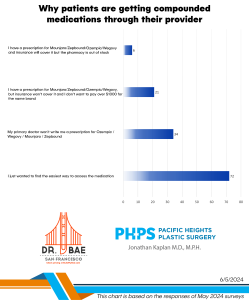
For those of you not in the medical field, there are typically four vital signs the nurse or doctor takes of the patient: blood pressure, respirations, heart rate and temperature. But in 1996, the American Pain Society coined the phrase, the 5th vital sign, which is pain. The only problem is that while the first four vital signs can be measured objectively by a blood pressure cuff or thermometer, pain is completely subjective. Because of the emphasis on treating patients for their pain, we may have inadvertently caused the current wave of opioid addiction. Let me explain.
What contributed to the current opioid addiction in America?
If you have time, you can read this excellent doctor-facing article about who to blame for the current opioid crisis or you can read my take below.
After the description of the 5th vital sign, the Veterans Health Administration followed suit and included pain as the 5th vital sign in their national pain management strategy. Not long after, the agency that “blesses” healthcare organizations like hospitals throughout the country, the Joint Commission on Accreditation of Healthcare Organization (JCAHO), introduced standards for pain assessment and management. According to the American Pain Society, “these standards stress patients’ rights to appropriate assessment and management of pain (JCAHO Standard RI 1.2.8, 2000) and emphasize that pain should be assessed in all patients (JCAHO Standard PE1.4, 2000).”
The point being that several agencies and organizations (three in the paragraph above) started to stress the importance of making sure patient’s pain was adequately treated. As you can read here, this can be a problem if a patient is addicted to painkillers and tries to game the doctor and the system. Regardless of the patient’s needs or true intentions, the emphasis on pain control was there. And it reached a fever pitch once penalties for not adequately treating pain were introduced into the mix.
The Centers for Medicare and Medicaid Services, or CMS, is the organization that reimburses doctors and hospitals for the care they provide to Medicare and through the states, Medicaid, patients. CMS started penalizing hospitals if they didn’t achieve a certain level of patient satisfaction based on patient surveys. These surveys addressed pain but also many other aspects of the patient’s hospital stay. So if the patient was unhappy with the treatment of their pain, or didn’t feel it was adequately controlled, the hospital was dinged on their reimbursement. Naturally, anytime certain behavior is either rewarded or punished, the hospital administrators will focus more on those issues. Thus, pain control was a priority and patients had to have their pain treated so they would respond favorably on surveys.
With such great focus on pain control, it’s easy to see how patients could be over treated for their pain. Additionally, with a never-ending effort to gain positive scores, there was less consideration as to whether the patient was really in pain or simply drug seeking. Subsequently, you now have patients with opioid addictions and doctors and hospitals afraid to not treat those patients.
All of this has resulted in new guidelines in treating chronic pain from the Centers for Disease Control and Prevention, congressional funding for prevention of opioid abuse and a new National Pain Strategy from the Department of Health and Human Services. Good for us…we took one problem (under treated pain) and replaced it with another (opioid addiction) on the other end of the spectrum!
Click here for the original blog post written by Dr. Jonathan Kaplan for BuildMyBod.




